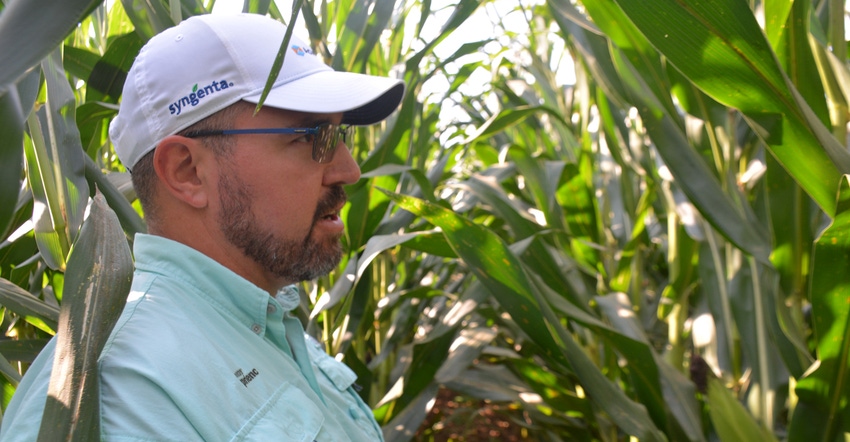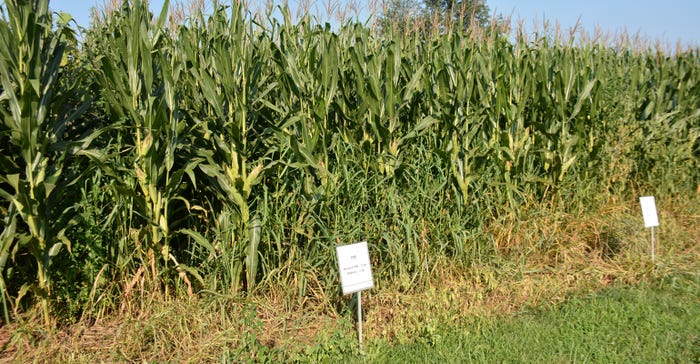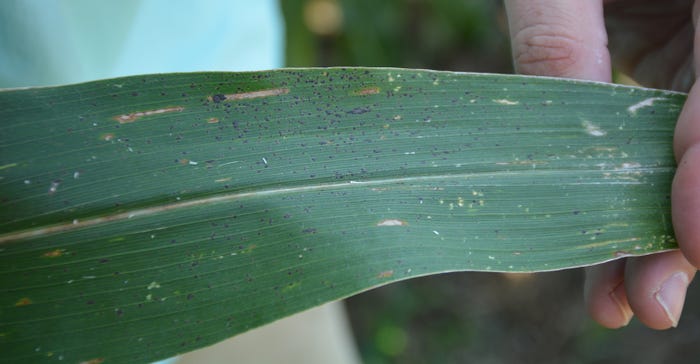
Corn and soybeans are heading down the final home stretch before combines start rolling.
It’s been a relatively good growing season in most parts of the mid-Atlantic and Northeast, with some exceptions, of course. Predicted yields might even break records in some places.
At Syngenta’s Grow More Experience plot just outside Mt. Joy, Pa., things are humming along with tall corn and bushy soybeans that’ll be ready for combining in a matter of weeks.
You won’t see corn and soybean hybrids being tested here. Instead, the site focuses on local issues affecting growers, mainly herbicide and fungicide treatments to control plant diseases and weeds, although most Grow More Experience sites do have corn and soybean trials.
So, what big issues have been brewing this season? A recent visit with Craig Austin, a Syngenta agronomist and Montgomery County, Pa., native, revealed some surprising results:
What is the main issue that you evaluated this season? So, here in the herbicide plots, one of the values we saw this year, specifically in corn and beans, is the value of overlapping residuals. So, a designated herbicide program where you know you're going to make multiple applications, and those applications are going to include products with residuals.
So for soybeans, whether it's something like BroadAxe, which has Dual and sulfentrazone, each giving you a grass residual and/or broadleaf residual. And then coming back with postemergence with also having residual there for weed management, but also for resistance management and product stewardship, and that's one of the things we try to demonstrate is product stewardship.

Evaluating residual herbicides was one of the main focuses of this year’s research and is a key concern for area growers, Craig Austin says.
With the new weeds we have in the area, whether that's your Palmer amaranth and your waterhemps, old weeds in the area like your marestail, or something that's maybe unique somewhat geographically to us here in southeast Pennsylvania. We have a lot of interest in burcucumber on certain farms. We get asked more of that than many of my counterparts across the country. So, what can we do to put residual in the program to help control some of these late-germinating weeds? How can we rotate our active ingredients to maintain good activity of these active ingredients and steward the products?
Tar spot was identified in Lancaster County in 2020. What have you been seeing in your plots and do you have any advice for growers who might be dealing with this new disease? It was very surprising to find it in Lancaster County in 2020. This is a new disease for the area. This is an economically yield-robbing disease. It can be devastating. The good news is what we're doing to manage gray leaf spot and northern corn leaf blight, those practices should also provide control to tar spot. They're may be some differences in the spectrum of fungicides that you can use; some may work better on tar spot than others.

In a secondary plot used for additional crop research, tar spot was found on several corn leaves. Austin says that fungicides used to manage gray leaf spot and northern corn leaf blight should also provide control for tar spot.
There's been more people investing in a fungicide this year with commodity prices being more favorable than they have been in the past. So, we have more people trying fungicides on their farm for the first time, and that’s maybe a good thing if this disease does get a foothold here, which I expect it would.
The online Crop Protection Network has fungicide efficacy ratings for several diseases, including northern corn leaf blight, gray leaf spot and tar spot.
Was there anything unexpected that you learned this season that growers should be aware of in the future? So, every year you're going to learn something different at these plots. In 2021, we had a very dry May for many in the area. This site had no rain for three weeks in the middle of May.
Now, this site was planted and the residuals were put down during that dry spell. And so, residual herbicides need rain to activate it. So we did not get our activated rainfall. Our first rainfall was 17 days after planting, and after the residuals were put down.
So, where we have treatments where we only put a single residual at planting, or preemergent, versus programs where we came back and had a planned second pass program, the value of having that second pass built in to kind of take out some of the risk of the weather, that was clearly visible at this site.
About the Author(s)
You May Also Like






